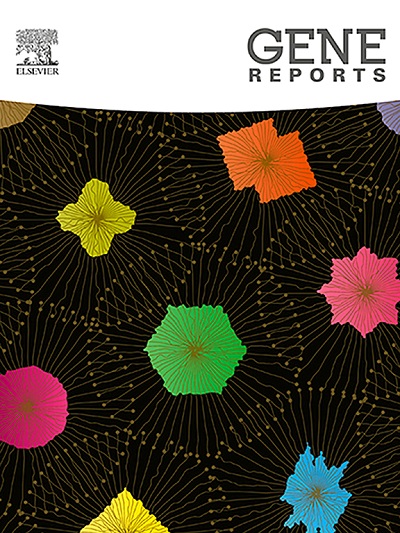Human papillomavirus as a potential etiological factor and biomarker in bladder carcinogenesis: A molecular epidemiological study
IF 1
Q4 GENETICS & HEREDITY
引用次数: 0
Abstract
Bladder cancer is a major public health concern, and the identification of novel biomarkers is crucial for improving its diagnosis and treatment. Human Papillomavirus (HPV) has been linked to various neoplasms, though its relevance to bladder cancer (BC) is hardly known. In this study, we aimed at evaluating the presence of HPV in bladder cancer tissues and determine its utility as a potential biomarker. Nested PCR, using consensus primers MY09/11, GP5+/6+ and reference plasmids targeting HPVs 16, 18, 33, 11, 6 and 31 were employed on 50 samples from patients with bladder carcinoma. Among the 50 bladder cancer patients analyzed, 23 (46 %) tested positive for HPV, while 27 (54 %) tested negative and significant association was identified between HPV infection and key clinical parameters including tumor stage (P = 0.031**), tumor grade (P = 0.007**) and muscle invasion (P = 0.046*). High-risk HPV genotypes, specifically type 16 was the most prevalent and was detected in 11 (47.8 %) of bladder cancer cases. Single HPV infection 18 (78.2 %) was more common than co-infection cases 5 (21.7 %), though no statistical significance was observed between infection type and patients' clinicopathological parameters. Our findings revealed a significant association between HPV infection and advanced tumor characteristics, particularly with higher tumor grade and pathological T-stage. High-risk HPV genotypes, notably types 16 and 18, were the most frequently observed, suggesting a potential role for high-risk HPV subtypes in bladder tumor progression. These findings underscore the possible contribution of HPV in bladder carcinogenesis and suggest that infection with the virus, particularly with high-risk strains, could serve as a valuable biomarker for early bladder cancer diagnosis and risk assessment. Targeting HPV in bladder cancer tissues may thus pave the way for HPV-based diagnostic and prognostic tools and tailored therapeutic approaches.
求助全文
约1分钟内获得全文
求助全文
来源期刊

Gene Reports
Biochemistry, Genetics and Molecular Biology-Genetics
CiteScore
3.30
自引率
7.70%
发文量
246
审稿时长
49 days
期刊介绍:
Gene Reports publishes papers that focus on the regulation, expression, function and evolution of genes in all biological contexts, including all prokaryotic and eukaryotic organisms, as well as viruses. Gene Reports strives to be a very diverse journal and topics in all fields will be considered for publication. Although not limited to the following, some general topics include: DNA Organization, Replication & Evolution -Focus on genomic DNA (chromosomal organization, comparative genomics, DNA replication, DNA repair, mobile DNA, mitochondrial DNA, chloroplast DNA). Expression & Function - Focus on functional RNAs (microRNAs, tRNAs, rRNAs, mRNA splicing, alternative polyadenylation) Regulation - Focus on processes that mediate gene-read out (epigenetics, chromatin, histone code, transcription, translation, protein degradation). Cell Signaling - Focus on mechanisms that control information flow into the nucleus to control gene expression (kinase and phosphatase pathways controlled by extra-cellular ligands, Wnt, Notch, TGFbeta/BMPs, FGFs, IGFs etc.) Profiling of gene expression and genetic variation - Focus on high throughput approaches (e.g., DeepSeq, ChIP-Seq, Affymetrix microarrays, proteomics) that define gene regulatory circuitry, molecular pathways and protein/protein networks. Genetics - Focus on development in model organisms (e.g., mouse, frog, fruit fly, worm), human genetic variation, population genetics, as well as agricultural and veterinary genetics. Molecular Pathology & Regenerative Medicine - Focus on the deregulation of molecular processes in human diseases and mechanisms supporting regeneration of tissues through pluripotent or multipotent stem cells.
 求助内容:
求助内容: 应助结果提醒方式:
应助结果提醒方式:


